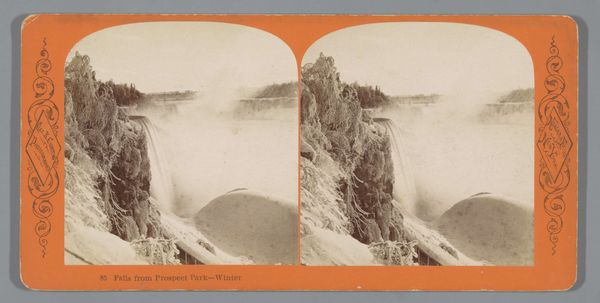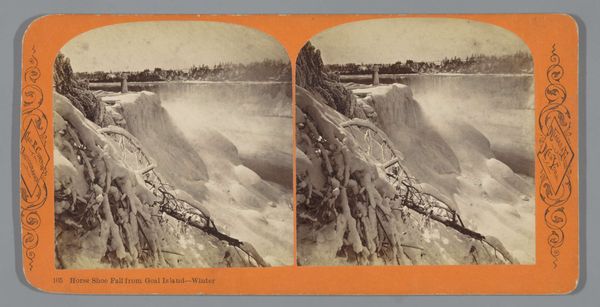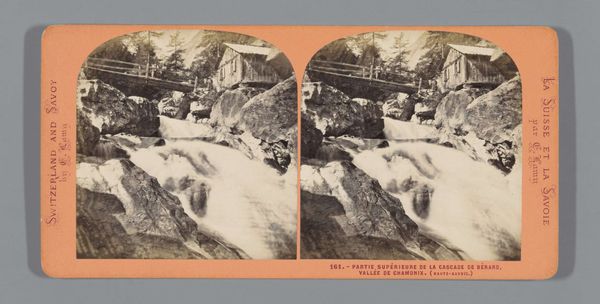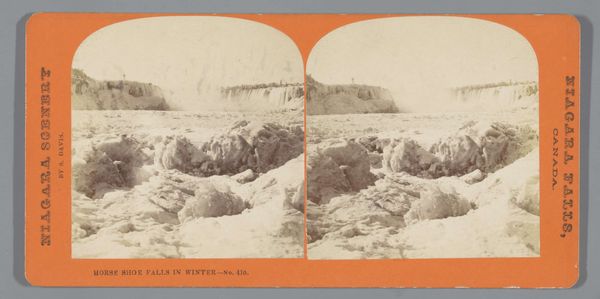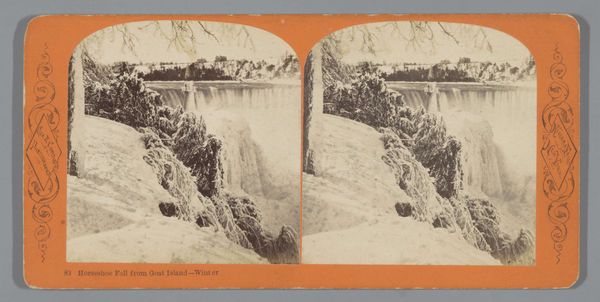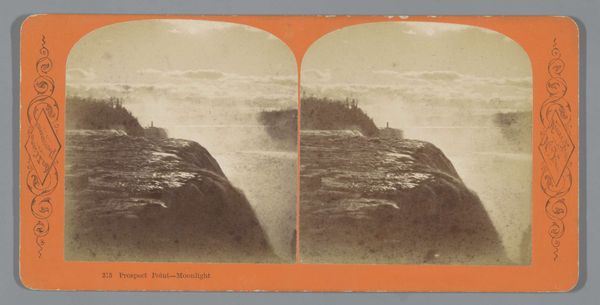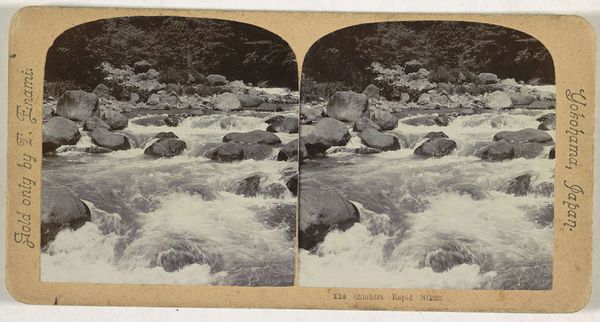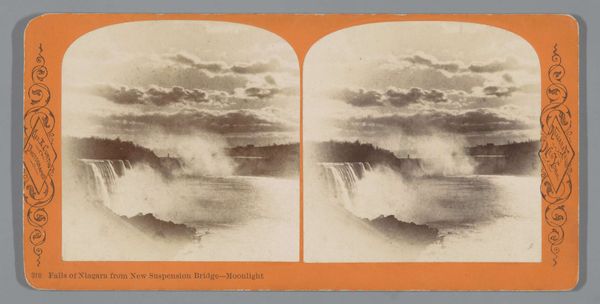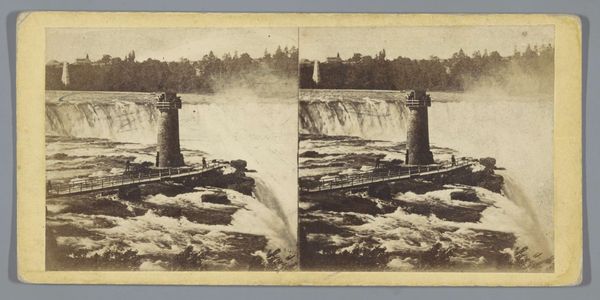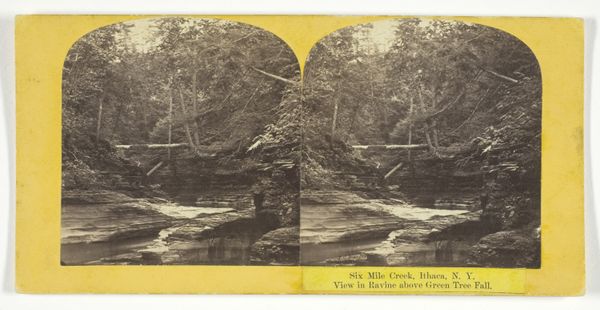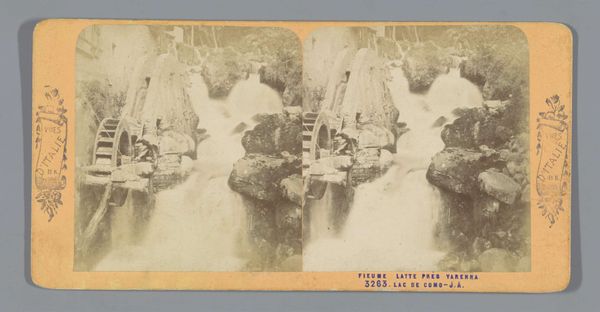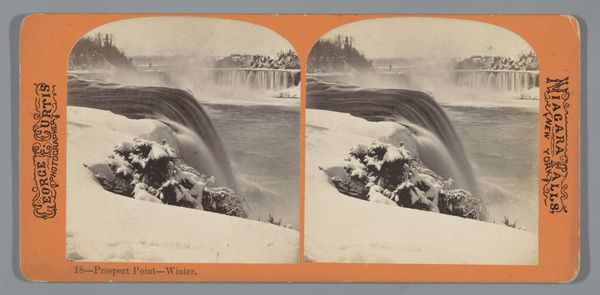
Schip 'the Maid of the Mist' in stroomversnellingen nabij de Niagarawatervallen 1863 - 1894
0:00
0:00
Dimensions: height 87 mm, width 176 mm
Copyright: Rijks Museum: Open Domain
Curator: This stereo card captures the Schip 'the Maid of the Mist' navigating the rapids near Niagara Falls, taken by George Barker sometime between 1863 and 1894. It’s a fantastic example of landscape photography from that era. What are your first thoughts? Editor: The immediate impact is the sheer dynamism. You feel the power of the water – it's almost overwhelming! The little boat seems so vulnerable against such a chaotic scene. Curator: It’s a compelling depiction of man versus nature, a recurring theme throughout the history of landscape art, and especially photography which captured and promoted natural monuments. Editor: Definitely. The very name, "Maid of the Mist," is interesting. It suggests a kind of submission, a surrender to the power of nature, but with an almost mythological connection. It’s romanticizing a natural, geological landmark that became an entertainment opportunity. Curator: The ‘Maid of the Mist’ boats existed to give people access to the sublime power of the falls but kept the individuals perfectly safe and dry - in other words, allowed audiences to flirt with this primal force in an entertainment context. It really emphasizes the human need to connect with—and often control—powerful natural symbols. And as an example of pictorialism, Barker’s emphasis is not simply on documentary, but mood and atmospheric effect. It is supposed to feel awesome. Editor: The card format itself speaks volumes about the popularization of travel. Stereo cards like this made exotic locales like Niagara Falls accessible to a wider audience, a democratisation of experience in a way. To see these landmarks yourself would require lots of cash. Curator: It's mass media packaged in a parlor novelty item. It's about experiencing awe without the discomfort of actual physical proximity or risk, the commodification of the North American frontier for entertainment. These landscape stereo cards served an essential role in shaping cultural perceptions, showing scenes like this again and again for the audiences back East. Editor: Precisely. This seemingly simple photograph then is a reflection of evolving attitudes towards nature, travel, and the public's relationship with both. It is about power and about entertainment; about access and escapism. A nice window into that specific slice of history. Curator: Absolutely, a layered artifact encapsulating complex shifts. These historical symbols persist because, in some sense, human relationships don't really evolve.
Comments
No comments
Be the first to comment and join the conversation on the ultimate creative platform.
